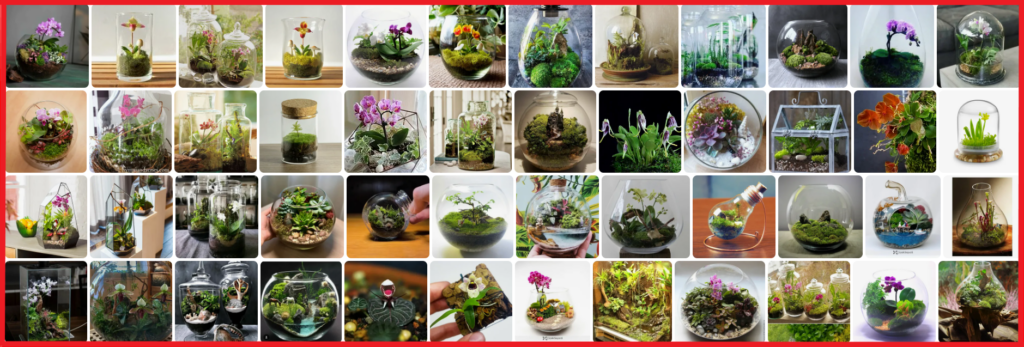Are you anxiously peering at your lusciously verdant air plant, silently questioning its vitality? Oh, dear reader, worry no more! Amidst the myriad mysteries of the plant kingdom, determining the state of an air plant’s well-being can be quite the enigma. Fear not, for this article shall unleash the secrets of unraveling the perplexing riddle: “How to tell if your air plant is dead?” While exploring signs both subtle and striking, we shall tread upon the horticultural tightrope with a neutral tone, unraveling the tale of life and decay. So gather your magnifying glass and curiosity, for we embark on an investigative journey into the world of withering foliage and the clues that expose its mortal destiny.
Signs to Look for in Determining the Health of Your Air Plant
Has your beloved air plant been looking a bit under the weather lately? If you’re wondering whether it’s time to bid farewell or if there’s still hope, we’re here to help you navigate the world of air plant vitality! While air plants are generally hardy and low-maintenance, they still require some care and attention. Keep an eye out for these signs to determine whether your air plant is thriving or in need of some extra TLC.
| Signs of a Healthy Air Plant | Signs of an Unhealthy Air Plant |
|---|---|
| 1. Vibrant green color | 1. Browning or yellowing leaves |
| 2. Strong, sturdy leaves | 2. Soft or shriveled leaves |
| 3. Regularly producing “pups” or offsets | 3. Lack of new growth or no pups forming |
Remember, it’s normal for your air plant to go through some natural changes, so don’t panic if you notice a slight browning or shedding of old leaves. However, if you observe several signs of decline, it might be time to take action. Assess the amount of light, humidity, and water your air plant is receiving to ensure you’re meeting its specific needs. With the right care, your air plant can continue adding a touch of unique green beauty to your space!

Understanding the Vital Indicators of a Dying Air Plant
Discovering that your air plant may be dying can be disheartening, but fear not! By familiarizing yourself with the vital indicators, you can intervene and potentially save your beloved plant. Remember, even though air plants are known for their resilience and ability to survive without soil, they still require proper care and attention.
1. Color: An unhealthy air plant often exhibits changes in color. If you notice a loss of vibrancy or the leaves turning brown, gray, or yellow, it could be an indication of distress.
2. Texture: Check the texture of the leaves. A dying air plant may have wilted or shriveled leaves that appear dry or brittle to the touch.
3. Root System: Gently inspect the roots. Healthy air plants have firm, silvery-white roots. If you see mushy, brown, or black roots, they are likely rotting, which is a cause for concern.
| Features | Tips |
|---|---|
| Yellow or brown leaves | Provide more regular misting or humidity |
| Wilted or dry leaves | Increase watering frequency or soak in water for a few hours |
| Mushy or black roots | Air plants with rotting roots cannot be saved, remove and discard |
By closely monitoring these vital indicators and taking appropriate action, you can give your air plant the best chance at survival. Remember to adjust the care routine as needed and provide the necessary nutrients, light, and air circulation to ensure your air plant thrives for years to come.

Reviving Strategies for a Potentially Expired Air Plant
So you have an air plant that’s seen better days, huh? It’s looking a bit droopy, and you’re starting to wonder if it’s reached the end of its lifespan. Before you give up hope, let’s explore some reviving strategies that might just bring your potentially expired air plant back to life!
Signs of Life or Time to Say Goodbye?
Determining whether an air plant is dead or simply in need of some care can be tricky, but there are a few telltale signs to look out for. First, check the color of the leaves. While vibrant green or a slight shade of silver is a sign of a healthy air plant, brown or yellow foliage could indicate trouble. Next, feel the leaves carefully – if they’re crispy or falling apart, it might be a sign that your air plant has reached the end of its days. However, if the leaves are still supple, there’s hope!
| Reviving Strategies | Features/Tips |
|---|---|
| 1. Rehydration | Soak your air plant in room temperature water for a few hours to rehydrate it. Avoid using tap water or soft water, as it may contain chemicals or minerals that can harm the plant. |
| 2. Proper Lighting | Air plants thrive in bright, indirect light. Place your plant near a window or provide artificial lighting to ensure it gets the light it needs to grow. |
| 3. Misty Moisture | Mist your air plant with water once or twice a week to maintain proper moisture levels. Be careful not to overwater, as excessive moisture can lead to root rot. |

Expert Tips to Salvage a Struggling Air Plant
Is your beloved air plant looking a little worse for wear? Don’t fret just yet! There are a few telltale signs to help you determine if your air plant is dead or just struggling. By following these expert tips, you may be able to revive and restore your cherished air plant to its former vibrant glory.
Firstly, pay close attention to the leaves of your air plant. If they have turned completely brown and dry, it might be an indication that your plant has passed on. However, if the leaves are still partially green, there is hope! Try the gentle squeeze test – if the leaves bounce back, it means they are still alive. Trim away the dead brown portions and soak the plant in water overnight to rehydrate it. Remember, air plants thrive on moisture, so provide them with a misting or a soak every week as a preventive measure.
Features/Tips:
| Feature | Tips |
|---|---|
| Proper watering |
|
| Light exposure |
|
| Air circulation |
|
Frequently Asked Questions
Q: Is my air plant alive or dead?
A: Ah, the eternal question of air plant enthusiasts! Fear not, there are a few nifty tricks to determine your little green wonder’s fate.
Q: What are the signs of a deceased air plant?
A: While we mourn the loss of these low-maintenance beauties, keep an eye out for crispy, brown leaves, a lack of vibrant color, and zero signs of new growth. If your air plant has transformed into a lifeless twig, it might be an air plant gone to the great beyond.
Q: Any last hope for resurrection?
A: Desperate times call for clever measures! If your air plant is giving faint signs of life, try the water test. Submerge your little friend in lukewarm water for a couple of hours and pray for a bit of wood-sorcery. If it revives and starts perking up, congratulations! Those green fingers of yours have worked their magic. If not, alas, it may be time to bid farewell and give it a proper plant funeral. As we draw near the end of our exploration into the world of air plants, it is crucial to acknowledge the unfortunate reality that sometimes these delicate beauties may find themselves on the brink of fading away. But fear not, dear reader, for armed with the knowledge we have imparted upon you, you possess the wisdom to discern whether your air plant still dances with life or has become a mere silhouette of its former vibrant self.
Remember, when it comes to assessing the vitality of your air plant, attentiveness is key. Observe the leaves closely, for signs of desolation or rejuvenation. Pay heed to the color of the foliage; the verdant hue represents vitality, while a sullied or discolored appearance may signify its demise. Gently touch the leaves, ever so softly. A healthy air plant leaf shall spring back with grace, displaying its elasticity, while a limp or brittle texture could foretell its ultimate surrender.
Yet, do not despair if your air plant appears to have reached its final chapter. For even in death, there lies a rebirth. Consider parting ways with your departed plant by repurposing its remnants as a decorative element or a statement piece in your abode—perhaps an ethereal ornament suspended from the ceiling, echoing the memory of its former ethereal presence.
May you always remember that nature’s cycle is one of perpetual transformation—the ebb and flow of life gracefully intertwine, embracing both growth and decay. Be courageous in your journey of nurturing these wondrous organisms, celebrating their triumphs and accepting their passings. In the end, the lesson lies not only in the keeping alive but also in embracing the inevitable cycle that nature bestows upon us all.
- When to Put Weed and Feed on Lawn in Michigan - October 16, 2023
- When to Fertilize Potatoes Plants - October 16, 2023
- Can You Plant Clover in the Spring - October 16, 2023

